
For approximate general sighting the compass is held
at waist level and the needle observed from above.
Working in terrain
A Orienting the map
[
5
]
a) Adjust bearing to N = 0°.
b) Lay the compass pointing north along the N-S grid lines
on the map.
c) Turn the map and compass until the N point of the
needle comes to rest between the N marks.
Important: On maps with no N-S grid lines, these should
be drawn in every 1 1/2“ (3-4 cm).
B Determining the direction of travel on the map
[
6
]
a)
Place the compass with one of the long edges on the
line con necting position A with the target position B. The
front end of the compass should be pointing towards
position A.
b) Turn the compass capsule until the N-S line on the dial
is parallel to the N-S grid lines of the map.
c) If you then hold the compass and turn around until the
red tip of the needle is located between the N marks
of the capsule, the compass will indicate the desired
direction of travel. Choose prominent landmarks along
the line of travel.
C Sighting a visible point of the terrain
[
7
]
a)
Take a bearing on the desired point and adjust the angle
by turning the dial so that the north markings on the dial
are over the north end of the needle.
b) Mark your own position on the map.
c) Place the compass on the map with the end of the
drawer frame front face on your position. Rotate the
compass until the N-S line on the dial is parallel to the
N-S grid lines of the map.
d) The point to be fixed is now on the line formed by the
long edge of the compass
D Locating your own position
[
8
]
a) Take bearings on an identifiable point in the terrain and
adjust the angle of the dial.
b) Place the long edge of the compass on the landmark
and turn until the N-S line on the dial is parallel to the
N-S grid lines of the map.
c) Draw a line from the sighted point towards the front of
the compass and parallel to the long edge.
d) Sight a second point and repeat processes a-c.
e) The intersection of the two lines gives the desired
position (the closer the angle be tween the intersecting
lines is to 90°; the greater the accuracy with which the
position can be determined).
E Avoiding an obstacle
[
9
]
When you encounter an obstacle such as a thicket,
swamp, hill, lake, etc.:
a) Change your route to the line of detour II early enough
(north end of needle under one pair of detour marks).
Count your paces.
b) As soon as the way is clear, turn back to the normal
line of march I.
c) Once round the obstacle, turn to line of detour II (north
end of needle under the other pair of detour marks).
d)
After counting the same number of paces proceed in the
original direction I.
Clinometer: measure of inclines Lateral
measurement
[
10
]
– Slide in mirror and hold back with finger
– Place the compass across line of vision on line of
inclination or take a sighting on line of inclination over
the edge of the com pass
– Read off angle of inclination (on red scale) directly
Longitudinal measurement
[
11
]
–
Open out mirror and fix in position by light downward
pressure
– Hold compass sideways and tilt verti cally; take sighting
of desired point over upper edge
– Read off angle of inclination in the mirror (on red
scale)
Precision measurement of angles by prism optical
system (DP 10)
[
12
]
– Adjust dial to approx. N = 0° or 180° (depending on
whether you are working with your right or left hand)
– Bring the compass up to eye level and hold horizontally;
adjust distance from eyes until the scale comes into
focus through the lens
– Take the sighting on the object along the line of the
marking and read off the bearing (against magnetic
north).
Attention: Metal objects or power-lines in your vicinity can
deviate the com pass needle. Strong mag ne tic fields can in
some circumstances even reverse the polarity. Therefore
it is advise able to check your compass perio di cally.
Small bubbles in the liquid are of no im portance. They
may appear and disappear with changes of tem perature
and air pressure.
Recta disclaims all responsibility for wrong utilization
of its products. The manufacturer warranty for RECTA
compasses lasts for 5 years.
Arbeiten im Gelände
A Orientieren der Karte
[
5
]
a) Richtungswinkel N = 0° einstellen.
b)
Den Kompass in Nordrichtung längs des N-S-Raster-
netzes auf Karte legen.
c) Karte mit Kompass drehen, bis N-Spitze der Nadel
zwischen den Nord-marken liegt.
Wichtig: Auf Karten ohne N-S-Rasternetz sind N-S-
Linien im Abstand von 3 bis 4 cm einzuzeichnen.
B Bestimmen der Marschrichtung auf der
Karte
[
6
]
a)
Kompass längsseitig auf die Verbindungslinie zwischen
Standort A und Bestimmungspunkt B auf die Karte
legen. Vorderseite dem Standort zugekehrt.
b) Kompasskapsel drehen, bis die N-S-Striche der Kap-
sel parallel zum N-S-Rasternetz der Karte liegen.
c) Wenn Sie jetzt den Kompass zur Hand nehmen und
sich selbst drehen, bis das rote Ende der Nadel
zwischen den Nordmarken der Kapsel steht, zeigt der
Kompass in Zielrichtung. Markante Geländepunkte in
der Marschrichtung wähl en.
C Bestimmen eines im Gelände sichtbaren Punk-
tes
[
7
]
a) Mit dem Kompass den zu bestimmenden Punkt an-
visieren und den Richtungswinkel durch Drehen der
Kompasskapsel einstellen (Nordmarken der Kapsel
über Norden der Nadel stellen).
b) Auf der Karte den (eigenen) Standort einzeichnen.
c) Kompass auf die Karte legen, Vorderkante an den
Standort-Punkt anlegen, Kompass um den Standort
drehen, bis die N-S-Linien der Kapsel parallel zum
N-S-Rasternetz der Karte liegen.
d) Der zu bestimmende Punkt liegt nun in der durch die
Längsseite des Kompasses gebildeten Linie.
D Bestimmen des eigenen Standortes
[
8
]
a) Einen bekannten Punkt im Gelände anvisieren und
Richtungswinkel einstellen.
b) Kompass auf Karte mit Längsseite an den anvisierten
Punkt legen und drehen, bis die N-S-Linien der Kom-
passkapsel parallel zum N-S-Rasternetz der Karte
liegen.
c) Linie vom anvisierten Punkt ausgehend parallel zur
Längsseite des Kom-passes einzeichnen, Richtung
Kompassfrontseite.
d) Einen zweiten Punkt anvisieren und die Vor gänge a-c
wiederholen.
e) Der Schnittpunkt der zweiten Linie gibt den gesuch-
ten Standort an (je näher der Winkel zwischen den
zwei Linien bei 90° liegt, desto genauer lässt sich der
Standort ermitteln).
E Umgehen eines Hindernisses
[
9
]
Bei Begegnung mit Hindernissen wie Dickicht, Sümpfen,
Hügel oder Seen:
a) Rechtzeitig Ausweichrichtung II einschlagen
(N-Nadel unter dem einen Paar Umgehungsmarken
einstellen). Schritte zählen.
b) Sobald der Weg frei ist, in Normalrichtung I weiterge-
hen.
c)
Wenn das Hindernis überwunden ist,
Ausweichrichtung III einschlagen (N-Nadel unter
dem anderen Paar Umgehungsmarken).
d) Nach der gleichen Anzahl Schritte in der
ur sprünglichen Marschrichtung weitergehen.
Gebrauch des Klinometers
Quermessung
[
10
]
– Spiegel einschieben und mit Finger blockieren.
– Kompass quer zur Blickrichtung auf geneigte Linie
auflegen oder geneigte Linie über Kompasskante
anvisieren.
– Neigungswinkel: Marke auf roter Skala direkt able-
sen.
Neigungswinkelmessung längs
[
11
]
– Spiegel ausklappen und durch leichten Druck nach
unten fixieren.
– Kompass seitlich senkrecht halten und über
Oberkante gewünschten Punkt anvisieren.
– Neigungswinkel: Marke auf roter Skala im Spiegel
ablesen.
Prismenoptische Präzisions winkelmessung (DP
10)
[
12
]
– Skala auf ca. N = 0° bzw. 180° stellen (je nachdem,
ob mit der rechten oder linken Hand gearbeitet
wird).
– Kompass in Augenhöhe bringen, horizontal halten,
Distanz zum Auge verändern, bis Skala durch Optik
klar lesbar.
– Anvisieren des Objektes in Verlängerung der
Strichmarke und Ablesen des Richtungswinkels
(gegenüber magnetischer Nordrichtung).
Achtung: Metallische Gegenstände oder
Starkstromleitungen in der Nähe können die
Kompassnadel fehlleiten. Starke Magnetfelder bewir-
ken unter
Umständen sogar die Umkehrung der Polarität.
Kontrollieren Sie deshalb regelmässig die Funktion
Ihres Kompasses. Kleine Blasen in der Flüssigkeit sind
ohne Bedeutung. Sie entstehen und verschwinden durch
Veränderung von Luftdruck und Temperatur.
Recta lehnt jede Haftung ab bei falscher Anwendung
ihrer Produkte.
Die Hersteller-Garantie für RECTA-
Kompasse beträgt 5 Jahre.
Two terms are essential to understand the technology
of com passes: decli na tion and inclination. Magnetic
lines do not neces sary point to geographical North. The
angle be tween these two directions is called the decli-
nation
[
1
]
. It varies locally and over time between one
country and another. With certain models, the appro-
priate correction can be set per manently, with simpler
models, this has to be calculated.
Declination correction
[
2
]
RECTA bearing compasses with sighting mirror and decli-
nation correction
have an adjusting screw on the reverse
side of the capsule. By turning this screw, the north mark-
ings (magnetic north) can be adjusted to compensate for
declination changes against the dial scale and true north
with the aid of a special index.
Example:
Declination 20° W: Increase in azimuth of 20°.
Declination 20° E: Decrease in azimuth of 20°.
The ver tical intensity of the magnetic field, known as
inclination, is not the same every where and this in-
fluences the horizontal posi tion of the needle. RECTA
compen sates for this effect by means of two different
capsules: one for the northern and one for the southern
hemisphere.
[
3a
]
However, RECTA compasses with the Global System
function at all latitudes wit h out it being ne cessary to
exchange the capsules.
[
3b
]
Operation
1) Hold the compass in one hand and pull the
cord with the other.
2) Fold out the mirror by tipping the compass. Push
mirror back when working with a map (this allows you
to see through the dial onto the map).
Side scale
The distance between the markings on the outside of the
housing is 3/16“ (5 mm); when fully opened, an additional
2“ (50 mm) is available between the body of the compass
and the end of the drawer frame.
Direction of travel (azimuth/bearing)
[
4
]
The bearing is the angle between true north and
the line of travel. It can be read off on the index.
Two terms are essential to understand the technology
of com passes: decli na tion and inclination. Magnetic
lines do not neces sary point to geographical North. The
angle be tween these two directions is called the decli-
nation
[
1
]
. It varies locally and over time between one
country and another. With certain models, the appro-
priate correction can be set per manently, with simpler
models, this has to be calculated.
Declination correction
[
2
]
RECTA bearing compasses with sighting mirror and decli-
nation correction
have an adjusting screw on the reverse
side of the capsule. By turning this screw, the north mark-
ings (magnetic north) can be adjusted to compensate for
declination changes against the dial scale and true north
with the aid of a special index.
Example:
Declination 20° W: Increase in azimuth of 20°.
Declination 20° E: Decrease in azimuth of 20°.
The ver tical intensity of the magnetic field, known as
inclination, is not the same every where and this in-
fluences the horizontal posi tion of the needle. RECTA
compen sates for this effect by means of two different
capsules: one for the northern and one for the southern
hemisphere.
[
3a
]
However, RECTA compasses with the Global System
function at all latitudes wit h out it being ne cessary to
exchange the capsules.
[
3b
]
Operation
1) Hold the compass in one hand and pull the cord with
the other.
2) Fold out the mirror by tipping the compass. Push
mirror back when working with a map (this allows you
to see through the dial onto the map).
Side scale
The distance between the markings on the outside of the
housing is 3/16“ (5 mm); when fully opened, an additional
2“ (50 mm) is available between the body of the compass
and the end of the drawer frame.
Direction of travel (azimuth/bearing)
[
4
]
The bearing is the angle between true north and the line
of travel. It can be read off on the index.
Sighting with the mirror
[
4
]
The positioning of the mirror on the RECTA compass
offers you the advantage of accurate, uncomplicated
sighting of the line of travel while observing the com-
pass capsule. By turning yourself with the compass
in sighting position the needle must be made to settle
with the red end between the parallel north markings
on the capsule.
[
1
]
[
2
]
Zwei Begriffe sind für das Verständnis der Kompass-
Technologie unentbehrlich: Dekli na tion und Inklinati-
on. Die magnetische Nordrichtung stimmt oft nicht mit
der geographischen Nordrichtung überein. Der Winkel
zwischen diesen beiden Nordrichtungen wird Deklinati-
on
[
1
]
genannt. Sie ist örtlich und zeitlich, von einem Land
zum andern verschieden. Bei bestimmten Modellen kann
die entsprechende Korrektur fest eingestellt werden; bei
einfacheren Modellen muss sie berechnet werden.
Einstellen der Deklination
[
2
]
Bei RECTA-Spiegelpeilkompassen mit einstell-
barer Deklinations-Korrektur befindet sich die
Korrekturschraube auf der Rückseite der Kapsel. Durch
Drehen dieser Stellschraube werden die Nordmarken
mit besonderem Index (magnetisch Nord) gegenüber
Skala und Nordnetz (geo grafisch Nord) um den Wert
der Deklination verstellt.
Beispiel: 20° W Deklination:
Vergrösserung des Azimutes um 20°.
20° E Deklination:
Verkleinerung des Azimutes um 20°.
Auch die vertikale Intensität des Magnet feldes,
Inklination genannt, ist nicht überall gleich, was
die Horizontallage der Nadel beeinflusst. RECTA
kompensiert diesen Effekt mit zwei verschiedenen
Kapseln: eine für die nördliche und eine für die südliche
Hemisphäre.
[
3a
]
RECTA Kompasse mit dem Global System funktio-
nieren über alle Breiten-grade hinweg ohne Tausch der
Kapsel.
[
3b
]
Handhabung
1) Kompass mit einer Hand halten und mit der ande-
ren Hand an der Schnur ziehen.
2) Durch Neigen Spiegel herausklappen. Für Arbeiten
auf der Karte Spiegel zurückschieben (Sicht durch
Kapsel auf Karte).
Seitenmassstab
Die Distanz zwischen den Strichmarken auf der
Gehäuseaussenseite beträgt 5 mm; bei voller Öffnung
sind zusätzlich 50 mm zwischen Kompasskörper und
Schiebervorderkante verfügbar.
Richtungswinkel
(Azimut, Marschrichtungszahl)
[
4
]
Zwei Begriffe sind für das Verständnis der Kompass-
Technologie unentbehrlich: Dekli na tion und Inklinati-
on. Die magnetische Nordrichtung stimmt oft nicht mit
der geographischen Nordrichtung überein. Der Winkel
zwischen diesen beiden Nordrichtungen wird Deklinati-
on
[
1
]
genannt. Sie ist örtlich und zeitlich, von einem Land
zum andern verschieden. Bei bestimmten Modellen kann
die entsprechende Korrektur fest eingestellt werden; bei
einfacheren Modellen muss sie berechnet werden.
Einstellen der Deklination
[
2
]
Bei RECTA-Spiegelpeilkompassen mit einstell-
barer Deklinations-Korrektur befindet sich die
Korrekturschraube auf der Rückseite der Kapsel. Durch
Drehen dieser Stellschraube werden die Nordmarken
mit besonderem Index (magnetisch Nord) gegenüber
Skala und Nordnetz (geo grafisch Nord) um den Wert
der Deklination verstellt.
Beispiel: 20° W Deklination:
Vergrösserung des Azimutes um 20°.
20° E Deklination:
Verkleinerung des Azimutes um 20°.
Auch die vertikale Intensität des Magnet feldes,
Inklination genannt, ist nicht überall gleich, was
die Horizontallage der Nadel beeinflusst. RECTA
kompensiert diesen Effekt mit zwei verschiedenen
Kapseln: eine für die nördliche und eine für die südliche
Hemisphäre.
[
3a
]
RECTA Kompasse mit dem Global System funktio-
nieren über alle Breiten-grade hinweg ohne Tausch der
Kapsel.
[
3b
]
Handhabung
1) Kompass mit einer Hand halten und mit der ande-
ren Hand an der Schnur ziehen.
2) Durch Neigen Spiegel herausklappen. Für Arbeiten
auf der Karte Spiegel zurückschieben (Sicht durch
Kapsel auf Karte).
Seitenmassstab
Die Distanz zwischen den Strichmarken auf der
Gehäuseaussenseite beträgt 5 mm; bei voller Öffnung
sind zusätzlich 50 mm zwischen Kompasskörper und
Schiebervorderkante verfügbar.
Richtungswinkel (Azimut, Marschrichtungszahl)
[
4
]
Der Richtungswinkel ist der Winkel zwischen geogra-
fisch Norden und der Marschrichtung. Er ist am Index
ablesbar.
Visieren mit Hilfe des Spiegels
[
4
]
Der untenliegende Spiegel am RECTA Kompass bie-
tet Ihnen den Vorteil eines genauen und übersichtli-
chen Peilens der Marschrichtung und die gleichzeitige
Beobachtung der Kom passkapsel. Durch Drehen um die
eigene Achse muss sich die rote N-Spitze der Nadel zwi-
schen den Nordmarken der Kapsel einpendeln.
Für eine grobe Richtungs bestimmung hält man
den Kompass auf Gürtelhöhe und beobachtet von
oben das Einschwingen der Nadel.
DP 2
DP 2
Mode d´emploi à l’intérieur
Operating instructions inside
Bedienungsanleitung inliegend
Instruzioni all'interno
Instrucciones en el interior de la caja
Handleiding ingesloten
1
2
3
www.recta.ch
F
GB
D
I
E
NL
RECTA, MORE THAN 100 YEARS OF HERITAGE.
6 417084 159779


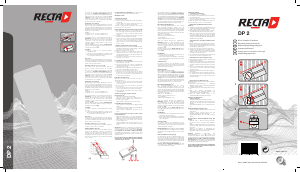

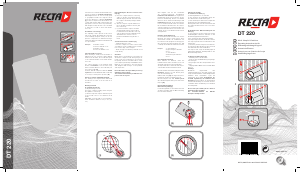
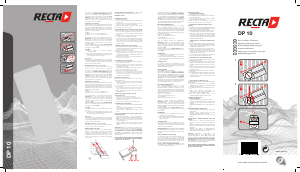
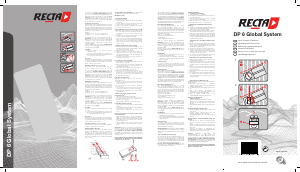
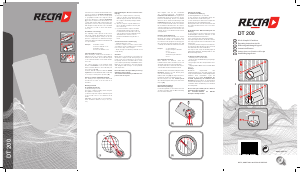
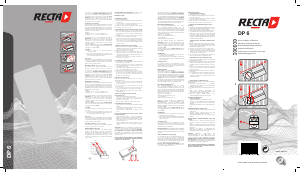
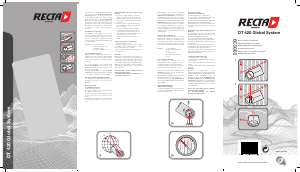
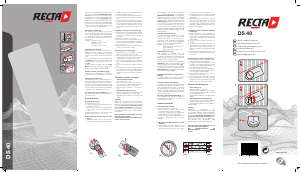

Praat mee over dit product
Laat hier weten wat jij vindt van de Recta DP 2 Kompas. Als je een vraag hebt, lees dan eerst zorgvuldig de handleiding door. Een handleiding aanvragen kan via ons contactformulier.
beantwoord | Ik vind dit nuttig (13)
beantwoord | Ik vind dit nuttig (3) (Vertaald door Google)
beantwoord | Ik vind dit nuttig (0) (Vertaald door Google)